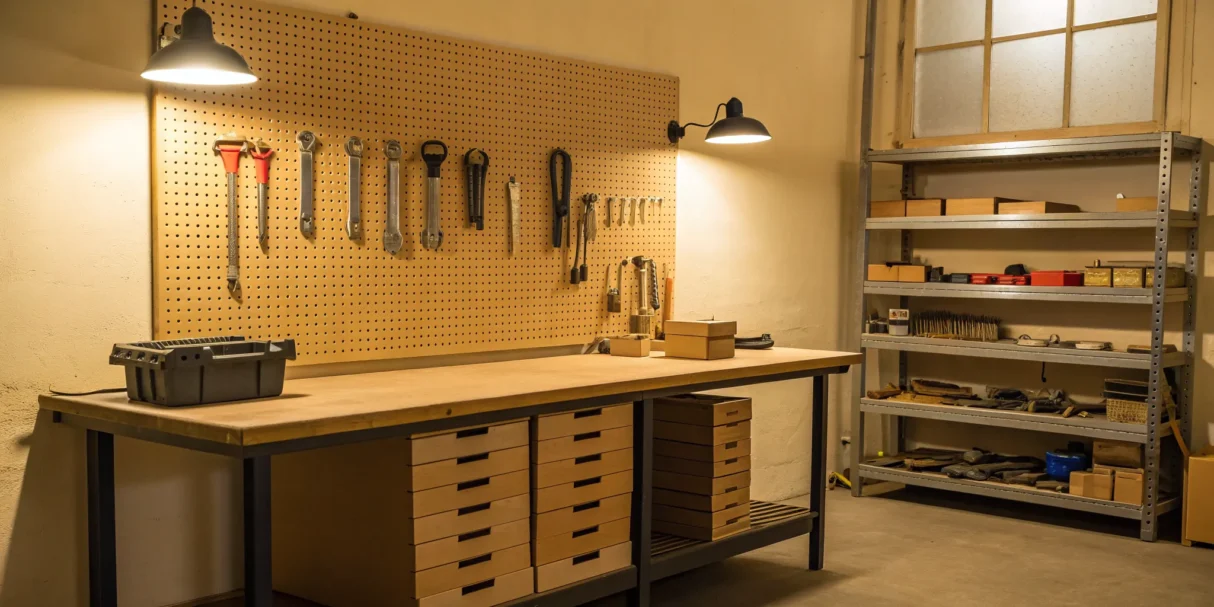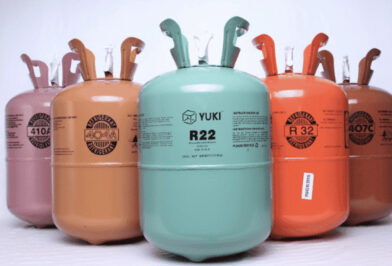If you’ve ever searched online for a generic parts checklist, you’ve already made a common mistake. The parts you need in Arizona are completely different from those needed in Minnesota. The most profitable plumbing businesses don’t guess what to carry; they build a custom plumbing truck stock list based on their own job history, location, and specialty.
This data-driven approach ensures your truck is stocked with items you’ll actually use, turning your inventory into a strategic asset that drives efficiency.
Key Takeaways
- Stop Guessing and Start Tracking Your Parts: The best truck stock lists are built from job history, not a generic checklist. Analyzing what you actually use helps you invest in the right parts, reduce wasted inventory, and ensure you’re prepared for your most common jobs.
- Organize Your Truck for Speed and Efficiency: A systematic layout where every tool and part has a home saves valuable time on every service call. Placing frequently used items near the doors and using clear, labeled bins means less time searching and more time working.
- Use Software to Maintain Perfect Stock Levels: Ditch the clipboard and use an inventory management system to automate reordering and get a real-time view of what’s on every truck. This prevents stockouts on critical parts and gives you the data to make smarter purchasing decisions.
Why Your Plumbing Truck Stock List Matters
Think of your plumbing truck as more than just a way to get from one job to the next. When it’s disorganized and understocked, it’s a drain on your time, money, and reputation. A well-managed truck stock list is one of the most powerful tools you have for running a smoother, more profitable plumbing business. It’s the difference between finishing a job in one visit and making multiple, time-wasting trips to the supply house.
So how can you create a system that supports your team in the field? Let’s break down what’s really at stake.
The Hidden Costs of a Messy Truck
We’ve all been there: you’re deep into a repair, only to realize you’re missing a single, crucial part. That quick fix just turned into a major headache. A single trip to the supply store can easily eat up 45 minutes or more. If your techs make just three of those runs a week, you’re losing nearly 10 hours of unpaid, unproductive time every month. That’s more than a full workday spent driving around instead of completing billable work.
These hidden costs add up quickly, eating into your profit margins and limiting the number of jobs you can complete. You can even see how much these inefficiencies are costing you with our ROI calculator. The fuel costs, the delayed schedules, the poor impression it leaves on a customer. It all adds up, fast.
The Payoff of an Organized System
Now, imagine the opposite scenario. Your tech arrives at a job, confidently finds the exact part they need in a clearly labeled bin, and finishes the work efficiently. The customer is impressed, the job is profitable, and your tech is already on the way to the next appointment.
This level of preparedness builds trust and leads to positive reviews and repeat business. Your team feels more professional and capable, which improves morale and performance. By investing time in creating a solid truck stock management system, you’re building a stronger, more competitive business that can consistently deliver excellent service.
Common Stocking Mistakes to Avoid
A plumber focused on residential service calls will need a different inventory than one who specializes in commercial new construction. Trying to carry every possible part for every potential job is a recipe for a cluttered truck and wasted money.
The most effective way to build a useful stock list is to track the parts you actually use over several months. This data-driven approach helps you identify your true essentials and ensures your truck is stocked with items you’ll use, not just items you think you might need someday.
Your Essential Truck Tools, Equipment, and Parts
Your plumbing truck is like your rolling workshop. Having the right mix of tools, safety gear, and critical parts ensures you can handle jobs efficiently. Think of it as building two foundations: the gear that helps you do the work and the parts that let you finish the job right the first time.
Tools You’ll Rely On Every Day
Plumbing calls are rarely predictable, so stocking a versatile toolkit is key. From simple repairs to complex installations, these tools keep your team ready for whatever the day throws at them:
-
Hand Tools and Consumables: Pipe wrenches, basin wrenches, pliers, tubing cutters, hacksaws, tape measures, plumber’s putty, Teflon tape, wax rings, and a variety of fittings.
-
Power Tools: A drain cleaning machine or auger, a cordless drill with bits, and a reciprocating saw with blades.
-
Diagnostic Tools: Pressure test gauges, test plugs, and sewer cameras for inspections.
-
Safety Gear: Gloves, glasses, boots, first-aid kits, and fire extinguishers.
Where Ply helps: With Ply, you can log tool assignments and track high-value equipment across trucks, reducing loss and ensuring everyone has what they need.
Parts and Materials You Can’t Skip
Even the best tools will not save the day if you do not have the right part in the truck. Stocking a thoughtful mix of fittings and replacement parts ensures you can handle emergencies, routine fixes, and larger installs without extra trips.
-
Copper, PVC, and PEX fittings in common sizes.
-
Shut-off valves, washers, and gaskets.
-
Emergency repair supplies like clamps, couplings, and epoxy.
-
Job-specific staples such as water heater valves, toilet flappers, and faucet cartridges.
Where Ply helps: Instead of guessing what is on hand, Ply gives you real-time visibility into every truck’s inventory. After thousands of barcodes printed by customers, they can now instantly check if a part is stocked and exactly where it is located.
How to Organize Your Plumbing Truck
Having the right parts on hand is only half the battle. If you can’t find what you need quickly, you’re losing time and money. By creating a dedicated spot for every tool and part, you turn your vehicle into a high-performance mobile workshop.
Find the Right Storage Solutions
Your truck’s organization starts with its physical setup. Invest in shelving, bins, and drawers that maximize space. Use clear, labeled containers so you can see what you have at a glance. A clean, organized truck is not only efficient but also signals professionalism to your customers the moment you arrive.
Categorize Your Parts
Divide items into essentials used on almost every job and specialized parts for specific tasks. You can also group materials by job type, creating a kit for drain cleaning or another for water heater repairs. Tracking which parts get used most often helps you refine what belongs on the truck.
Optimize Your Truck’s Layout
Keep frequently used tools near the doors for quick access, and store heavier items low and centered for stability. A smart layout saves minutes on every job and reduces frustration for your techs.
Track Your Stock with Software
Instead of relying on memory or messy clipboards, you can use software to track every part. Modern inventory management systems give you a real-time view of what’s on your truck, what’s in the warehouse, and what you need to reorder.
Where Ply helps: By labeling bins and scanning them with Ply, your team always knows what is on the truck. The mobile app makes it easy to check stock in real time without digging through containers.
Create Your Custom Stock List
A generic checklist is a great starting point, but the most profitable plumbing trucks are stocked with intention. Your inventory should reflect your business, your market, and the jobs you take most often. Building a custom stock list reduces trips to the supply house and keeps techs ready for anything.
Stocking for Residential vs. Commercial Jobs
The parts you need for a leaky kitchen faucet are completely different from what’s required for a commercial boiler repair.
- Residential jobs often involve standard fixtures, P-traps, and common pipe sizes.
- Commercial work, on the other hand, can demand larger-diameter pipes, specialized valves, and industrial-grade components.
Your stock list should directly mirror the types of work you do most. If you serve both markets, consider creating dedicated kits or organizing your truck by job type to keep things efficient and easy to find.
Adjusting for Season and Location
Your geographic location and the time of year play a huge role in what you should carry. Think seasonally: stock up on sump pump parts before the spring thaw and have supplies for winterizing sprinkler systems ready in the fall. The best plumbers let experience and their environment guide their inventory. Your stock list should adapt to the weather, not the other way around.
Plan Your Stock for Specific Jobs
Decide on your stocking philosophy. Some plumbers prefer a lean approach, carrying only the most essential parts to keep inventory costs low. Others stock their trucks for nearly any scenario, believing the time saved by avoiding supply house runs is worth the investment. This is especially true for emergency jobs. Your strategy should align with your business model. If you specialize in 24/7 emergency calls, a fully-stocked truck is your best bet. For scheduled installations, a leaner inventory might make more sense.
How to Rotate Your Stock
The most effective way to build a custom list is to track what you actually use. Pay close attention to your job history over a six- to twelve-month period to see which parts you reach for most often. This data helps you eliminate the “just-in-case” items that collect dust and tie up cash. Using inventory management software can automate this process, giving you clear insights into usage patterns.
Where Ply helps: Ply tracks part usage automatically, helps you set reorder points, and connects to your purchasing workflow so your trucks stay stocked without the guesswork.
Want to dive deeper? Check out our inventory management guide for more tips.
Keep Your Stock List Up-to-Date
A stock list is a living document. Your business changes, jobs evolve, and new parts become available. To keep your truck ready for anything, you need a process for regularly updating your list.
Track What You Use
The best stock list is based on data, not guesswork. Track part usage over six to twelve months to see which items are your “greatest hits” and which rarely move. This makes reorder points more accurate and keeps money from sitting in unused stock. With inventory software like Ply, every part used is logged automatically, giving you a clear picture of consumption.
Schedule Regular Reviews
Consistency is the key to staying organized. Make inventory review a routine, non-negotiable task. Pick a regular time each week, like Friday afternoon or Monday morning, to check stock levels and refill supplies. This proactive approach prevents the slow creep of disorganization and ensures you catch low stock before it becomes an emergency. Set a recurring calendar reminder for your warehouse manager or lead tech to conduct a quick audit and place restock orders.
Keep Your Team in the Loop
Your techs know what’s working, what’s missing, and what’s gathering dust in the back of the truck. Create a simple feedback loop so they can easily report part usage and suggest changes to the stock list. With mobile tools, your entire team stays connected, allowing them to check stock levels, request parts, and update job information right from the field. This real-time communication ensures that the information in your system accurately reflects what’s actually on the trucks.
Always Look for Ways to Improve
Your perfect stock list today might be outdated in a year. Make continuous improvement part of your culture. Regularly analyze your usage data to spot trends. Are you using more of a certain valve? Is a specific fitting becoming obsolete? Talk to your suppliers about new products that could save time or money. The goal is to refine your inventory continuously. The right software can also make this feel effortless by providing clear reports and simplifying the purchasing process.
Frequently Asked Questions
How do I start building a custom stock list if I don’t have any historical data to analyze? The best way to start is by creating that data right now. For the next month, have your technicians keep a simple log of every single part they use and, just as importantly, every part they had to drive to the supply house to get. This simple list is your starting point. It will quickly show you the 20% of parts that solve 80% of your problems, giving you a real-world foundation to build your essential stock list from.
What’s the best way to get my technicians to actually follow a new organization system? The key is to involve them in the process from the beginning. Ask for their input on where tools and parts should go to make their workflow easier. When they have a say in the layout, they’ll have ownership over it. Also, make the system incredibly easy to follow with clear, durable labels for every bin and drawer. When they see how much time a clean system saves them on the job, it will become a habit they’re happy to maintain.
Is it better to overstock my trucks or keep the inventory lean? This really depends on your business model. If you specialize in 24/7 emergency calls, having a wider variety of parts on hand is a smart investment because the time saved is critical. For businesses that focus more on scheduled installations or maintenance, a leaner inventory of just the essentials makes more financial sense. The goal isn’t to carry everything, but to use your job data to be strategically overstocked on the parts you use most often.
How much money should I expect to invest to properly stock one truck? There isn’t a magic number, as it depends entirely on the type of work you do. Instead of thinking about a total cost, think about it in phases. Start by investing in the high-frequency, low-cost parts your data shows you use every week, like common fittings, valves, and washers. From there, you can gradually build out your inventory. A truck with $1,000 of the right parts is far more profitable than one with $5,000 of disorganized, slow-moving stock.
When is the right time to switch from a spreadsheet to inventory software? You’ll know it’s time when your spreadsheet starts creating more problems than it solves. If you can’t tell what’s on a truck without calling the tech, if you’re constantly running out of critical parts unexpectedly, or if you’re spending hours each week manually updating counts and creating purchase orders, you’ve outgrown your system. The right software gives you that time back and provides a clear, real-time view of your inventory across the entire company.



